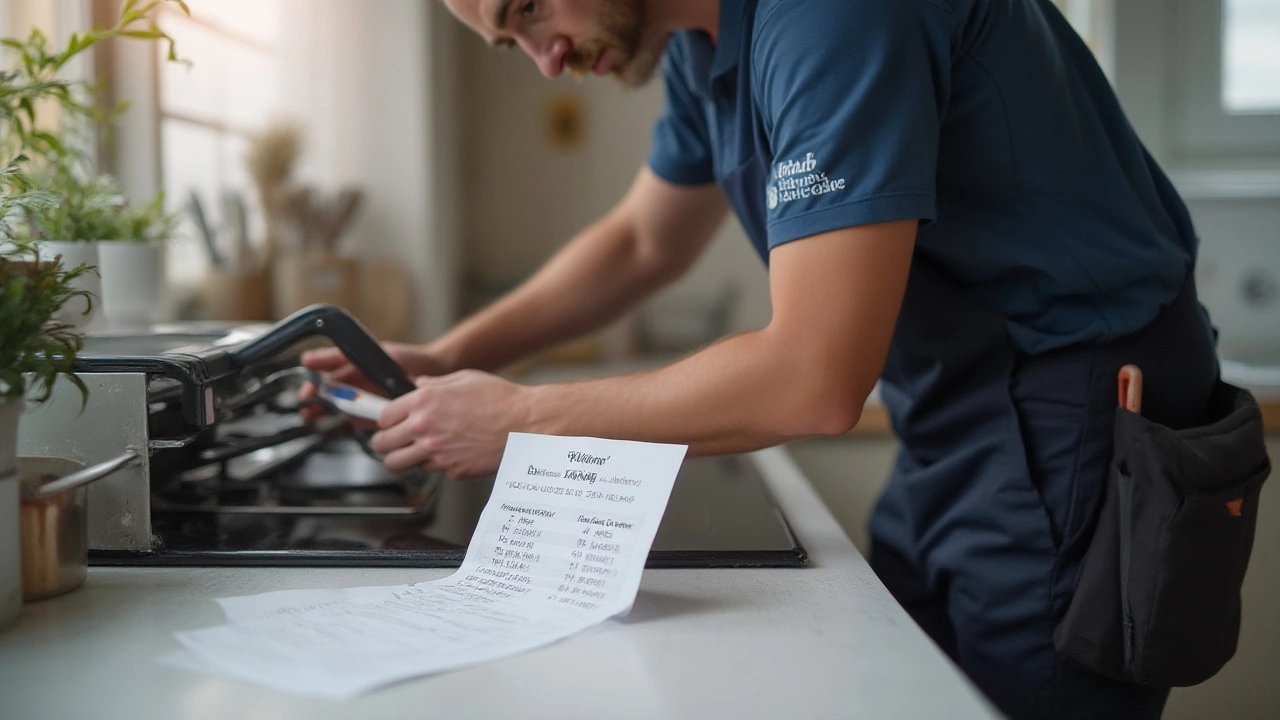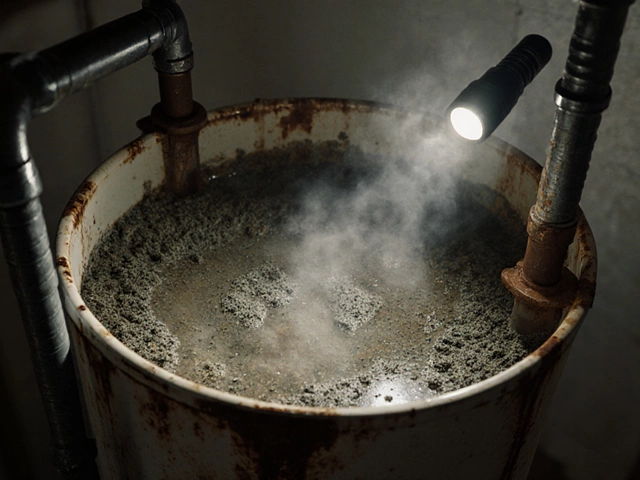Cookers break at the worst possible moments. You’re about to bake a birthday cake, or maybe you’ve got people coming over, and suddenly, the oven won’t heat, the hob clicks and clicks, or the whole appliance just sits there like a dead weight. Nothing makes you question modern life more than staring helplessly at a broken cooker and wondering—do I call someone to fix this, or is this just a money pit begging to be replaced?
How Long Does a Cooker Actually Last?
The lifespan of a cooker is longer than most people guess. According to the UK’s Office for National Statistics (ONS), the average standalone electric cooker serves faithfully for 13 years, while gas cookers can edge close to 15 years on average. Some last over two decades, especially if you keep up with basic cleaning and maintenance. Still, by year ten, most start showing their age: slow heating elements, unpredictable oven temps, and the odd weird smell when turned on—lovely, huh?
But not every cooker is created equal. High-end brands like Miele and AGA are known to soldier on for 20 years or more, but budget models are lucky to see age twelve. Regular cleaning helps, but even the best cared-for appliance can fall victim to dodgy wiring or the death of a heating element. So if your cooker has crossed a decade, the odds tick up that a major fault could be around the corner.
Got a cooker that’s just five or six years old? It can usually be fixed easily and affordably. On the other hand, if it’s old enough to remember the days before TikTok, you might want to start pricing out new appliances anyway.
One quick rule of thumb: if your cooker is under 8 years old and hasn’t developed recurring issues, repair is almost always the best bet. Between 8 and 12 years, you’ll need to start comparing repair costs with replacement value. Cross the 15-year mark, and you’re frankly on borrowed time.
Common Cooker Problems and What They Cost to Fix
Not all cooker breakdowns spell disaster. Some repairs are dead simple. Others will make your wallet quietly weep. Here are the usual suspects:
- Heating element failure: Super common in electric ovens and hobs. If your cakes are soggy or the rings don’t glow, it’s often a blown element. Replacements run £40–£110 for the part and an extra £30–£90 for labor, depending on whether you use an independent tech or go through the brand.
- Broken thermostat: A dodgy thermostat means your cooker is guessing how hot it is. Expect to spend £60–£120 installed. If you’ve noticed inconsistent cooking results or burnt edges, this might be your culprit.
- Ignition issues (gas): Gas cookers sometimes refuse to light or make clicking sounds forever. This could be a worn spark plug (£20–£40 for the part) or faulty ignition switch (a bit more expensive). Labor pushes total cost up to £70–£120.
- Control knobs and timers: Snapped knobs and fritzy digital timers are common above five years old. Replacement knobs can be £20 a pop but are usually DIY-friendly.
- Door seals and hinges: Oven doors that won’t shut properly bleed heat and trash your results. New seals or hinge kits cost £15–£50, sometimes plus a small labor charge.
Major issues, like complete electrical failure, leaking gas valves, or dead circuit boards? These might call for a much bigger bill—sometimes crossing the £200–£300 line. In such cases, think hard before you say yes to repair work.
Here’s a handy table with typical cooker repair costs in 2025:
| Repair Type | Cost Range (£) |
|---|---|
| Heating Element Replacement | 70–200 |
| Thermostat Replacement | 60–120 |
| Ignition Repair (Gas) | 70–150 |
| Door Seal/Hinge | 25–90 |
| Control Knob | 20–50 |
| PCB/Circuit Board | 120–250 |
Prices shift depending on your city, whether you use a brand engineer or a local pro, and if parts are in stock. Try to get at least two quotes before giving the green light.

When Repair Makes Sense—And When It Doesn't
Here’s the gut check moment: is it worth repairing a cooker, or is this just sinking cash into old tech? Think about these points:
- Cost of repair vs. cost of replacement: The old 50% rule works well. If the fix costs more than half a new model of similar quality, replacement usually wins. Modern cookers start as low as £250 for basic models and shoot upward of £1000 for big-brand, feature-loaded units.
- Availability of parts: If you own a niche European model or one that’s been discontinued, even simple parts can get expensive (or impossible) to find. No tech wants to keep hunting down rare heat sensors from 2012.
- Frequency of repairs: Has your cooker needed fixing more than once in the last 18 months? If so, that’s probably not a coincidence. Multiple faults in a short window signal bigger underlying issues (like age, worn wiring, or a failing control panel).
- Your own DIY skills: Swapping a heating element or a knob? You can totally do this with common tools and YouTube. But anything electrical, or dealing with gas, is best left to pros for safety—plus your home insurance probably demands it.
- Energy efficiency: Old cookers are energy hogs. If your electricity or gas bills are higher than your neighbour’s, a modern appliance might pay for itself within a couple of years in savings alone.
More subtle factor: how the cooker fits your life. Are you planning to move? Renting out your place? If so, you might want to invest in a reliable, worry-free appliance (no one loves emergency calls from tenants or new homeowners about a dodgy cooker).
Hidden Costs and Eco Impact
It’s not just about what you pay today. Think about disposal fees for old appliances (typically £20–£35 in the UK if done properly, or included if you have the new one delivered). Then there’s the environmental cost. Manufacturing new appliances churns out more carbon than fixing an old one—some studies peg the savings at roughly 175 kg of CO2 for every cooker repaired instead of replaced. That’s like not driving your car for nearly a month.
Of course, energy-guzzling ancient cookers can offset those ‘repair is greener’ gains. If your cooker was made far before energy labeling rules or still lacks an ‘A’ rating, it may be smarter for your wallet—and the planet—to upgrade. Still, if your current machine isn’t an energy monster, repair usually wins points for sustainability.
Here’s what often gets missed: the value of time. Waiting for parts (especially in rural spots) can take days. Meanwhile, the kitchen becomes a strange wilderness. If you cook at home daily, that inconvenience quickly adds hidden costs in takeout, lost food, and sanity. Some people weigh the cost of living without their cooker; if you can hack it with a microwave or takeaway for a while, repair seems fine, but if you cook for a large family, a fast swap might be worth the premium.

Tips to Stretch Your Cooker's Life (And Avoid Repairs)
You’d be amazed at how routine care heads off the big-ticket jobs. Forget what your mum told you about ‘just wiping it down’ every so often. Here’s what actually makes a difference:
- Deep clean heating elements and gas burners every few months. Baked-on crud insulates elements and screws up temperature readings. Gas cookers especially need clean burners for safe ignition.
- Swap out old or cracked door seals. Poor seals leak heat—and force your cooker to work overtime, risking burnout.
- Never use sharp tools on ceramic or glass hobs. Even a single scrape can turn into a crack over time, and that’s a repair nightmare.
- Make sure your kitchen isn’t too humid, as moisture slowly short-circuits electronic parts. If you see steam trapped between oven glass panels, get it sorted quickly.
- Use the right pots and pans: Oversized cookware warps hobs and wastes energy. Flat-bottomed pans work best and keep the heat transfer smooth.
- Deal with electrical surges: If you live in an area prone to outages, use surge protectors on your cooker’s power line. Unexpected spikes can fry circuit boards in an instant.
- Check for software updates: Some smart, modern cookers can have their firmware updated—usually via a USB port or app. This can fix minor bugs and improve efficiency for free.
- Record every repair in a little notebook or a phone app. Track dates, costs, and recurring problems. If patterns emerge, you’ll spot when it’s time to move on rather than keep patching things up.
Think of it like your car—meaningful upkeep once a month is worth five years of hassle-free service. Most problems start small: a sticky button, a burnt indicator light. If you jump on them fast, repairs stay cheap and simple. Ignore them and they multiply, especially in hard-to-reach spots.
One hack most people miss: replace cheap cooker fuses regularly, especially if your electrics have ever tripped. A blown fuse is a £3 fix, compared to £150+ for a fried circuit board.
And for gas models: pay for a professional safety check every 18–24 months. It’s cheap peace of mind and keeps your cooker legal, should you ever rent or sell.





